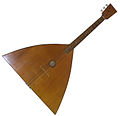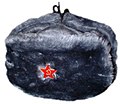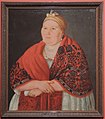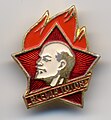Tourism in Russia
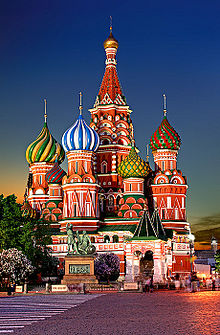
Tourism in Russia has seen rapid growth since the late Soviet times, first inner tourism and then international tourism as well. Rich cultural heritage and great natural variety place Russia among the most popular tourist destinations in the world. The country contains 23 UNESCO World Heritage Sites, while many more are on UNESCO's tentative lists.[1]
Major tourist routes in Russia include a travel around the Golden Ring of ancient cities, cruises on the big rivers including the Volga, and long journeys on the famous Trans-Siberian Railway. Diverse regions and ethnic cultures of Russia offer many different foods and souvenirs, and show a great variety of traditions, including Russian banya, Nizhny Novgorod Khokhloma and Matryoshka, Tatar Sabantuy, or Siberian shamanist rituals. In 2013, Russia was visited by 33 million tourists, making it the ninth-most visited country in the world and the seventh-most visited in Europe.[2]
The citizens of CIS member states, Serbia, most countries in Latin America, and South Korea, Thailand, South Africa and Mongolia can travel freely to Russia and do not need a visa. Tourists from China, Japan, India, Iran, Turkey, Morocco, Mexico, and some other contries can purchase visas online (e-visas). Tourists from other countries are required to visit a Russian diplomatic mission to purchase a visa. Tourists are required to have a valid passport when crossing the Russian border. Russian visas cannot be purchased at the border. For more information see visa policy of Russia.
Climate
Most of European Russia is in the same climate zone as the Baltic states, Belarus, and northern Ukraine. The climate of south-west Russia (the lower Volga, and the area between the Black Sea and the Caspian Sea) is more arid, with hotter summers and shorter winters. The climate of Russia's Far East is similar to that of Hokkaido, Japan and north-east China. The most severe climate is in Siberia where winters are very cold and summers are very hot, and in Russia's Far North where temperatures are always low, with the exception of Murmansk, where the sea never freezes due to the influence of the warm Norwegian Current. The climate of Russia's Black Sea coast is subtropical. Contrary to popular belief, the climate of most popular tourist areas of Russia is not severe and is similar to that of Eastern Europe. The mean temperatures of December, January and February in Moscow are -4°C (25°F), -7°C (19°F), -6°C (21°F) respectively, but colder weather is common. Over the past few decades spells of extremely cold weather (below -20°C/-4°F) in central European Russia have become rare (in the winter 2016/2017, Moscow had temperatures below -20°C only for three days), while the number of wintry days when the temperature is close to or slightly above the freezing point has grown significantly. In coastal areas wintry temperatures can feel somewhat colder than they actually are due to high humidity. Unless you are allergic to the pollen of certain trees and herbs (such as birch, horse chestnut, alder, lilac, cherry tree, ash tree, rowan tree, lime tree, dandelion), the best time for travelling to central European Russia is late spring when the temperatures are pleasant and many trees are in bloom, and early and mid autumn when trees change their colour and it is not cold yet. Summer months are also good except for June in cities in central and south Russia when poplar fluff can be a nuisance, but recently the authorities of many Russian cities have taken action against the fluff by cutting and removing poplar trees and the situation has improved dramatically. Late autumn, winter months, and early spring will be enjoyable if you wear appropriate clothes and shoes. If you are interested in winter activities, in central European Russia it usually begins to snow in late autumn and snowpack usually doesn't melt away completely before early April, although spells of warm weather do occur and snow can temporarily melt away in mid-winter. Ski resorts in mountainous areas have snow throughout the winter season. Central European Russia sometimes experiences cold spells in early May when the temperature can go from +15°C/59°F to the freezing point for a few days.
Cultural tourism


The most popular tourist destinations in Russia are Saint Petersburg (which appeared in the list of top visited cities of Europe in 2010) and Moscow, the current and the former capitals of the country and great cultural centers, recognized as World Cities. Moscow and Saint Petersburg feature such world-renowned museums as Hermitage and Tretyakov Gallery, famous theaters including Bolshoi and Mariinsky, ornate churches such as Saint Basil's Cathedral, Cathedral of Christ the Saviour, Saint Isaac's Cathedral and Church of the Savior on Blood, impressive fortifications such as Moscow Kremlin and Peter and Paul Fortress, beautiful squares such as Red Square and Palace Square, and streets such as Tverskaya and Nevsky Prospect. Rich palaces and parks of extreme beauty are found in the former imperial residences in the suburbs of Moscow (Kolomenskoye, Tsaritsyno) and Saint Petersburg (Peterhof, Strelna, Oranienbaum, Gatchina, Pavlovsk Palace, Tsarskoye Selo). Moscow contains a great variety of impressive Soviet-era buildings along with modern skyscrapers, while Saint Petersburg, nicknamed Venice of the North, boasts its classical architecture, many rivers, channels and bridges.

Nizhny Novgorod is the capital of the Volga region. It is considered to be "younger brother" of Moscow. Because it has its own Kremlin, the metro, the so-called "Nizhny Novgorod Arbat" (Bolshaya Pokrovskaya Street) and even a copy of the monument to Minin and Pozharsky, the original of which is in the Russian capital. Nizhny Novgorod is divided into two parts by the Oka River. The Upper City is its historical part. Here are the Kremlin, Minin and Pozharsky Square, Bolshaya Pokrovskaya and Rozhdestvenskaya streets, nightclubs, open spaces, a large number of monuments and simply historical places. The Lower City is its industrial and commercial part. Here are the Fair, the old Sormovo and Kanavino, GAZ and Sotsgorod (the so-called "city in the city"), the railway terminal, the airport and many attractions for people who want to see the styles of underground, industrial and grunge. The city is the main starting point for cruises along Volga River. From here begins shipping to Moscow and St. Petersburg.
Kazan, the capital of Tatarstan, shows a unique mix of Christian Russian and Muslim Tatar cultures. The city has registered a brand The Third Capital of Russia, though a number of other major Russian cities compete for this status, including Nizhny Novgorod, Novosibirsk, Yekaterinburg and Samara, all being major cultural centers with rich history and prominent architecture. Veliky Novgorod, Pskov, Dmitrov and the cities of Golden Ring (Vladimir, Yaroslavl, Kostroma and others) have at best preserved the architecture and the spirit of ancient and medieval Rus', and also are among the main tourist destinations. Many old fortifications (typically Kremlins), monasteries and churches are scattered throughout Russia, forming its unique cultural landscape both in big cities and in remote areas.
Sakha Republic proposes to use former forced labour camps as a tourist attraction. [3] Poles visit places of Communist crimes, e.g. of the Katyn massacre and Solovetsky Islands. [4][5]
Notable Museums
Russia enjoys a rich cultural heritage and is home to many museums. The most notable include the Tretyakov Gallery, the Kremlin Armoury and the State Historical Museum in Moscow, the Hermitage Museum, the Russian Museum, and the Central Naval Museum in St Petersburg, the Kazan Kremlin in Kazan, the Battle of Stalingrad Museum, etc. Russia is also famous for having many museums related to its literary and classical music heritage, such as Yasnaya Polyana (Leo Tolstoy), the Mikhaylovskoye Museum Reserve (Alexander Pushkin), the Dostoyevsky Museum, the Tchaikovsky State House-Museum. the Rimsky-Korsakov Apartment and Museum, the Mikhail Glinka Museum in Moscow, the Sergei Rachmaninoff Estate Museum in Ivanovka, Tambov Region, the Alexander Scriabin Apartment Museum in Moscow.
Major National Holidays and Celebrations
for a full list see Public holidays in Russia
- New Year's Eve, 31st December
- Orthodox Christmas, 7th January
- Maslenitsa, in February or March, in the week before the Lent (according to the Julian calendar)
- Orthodox Easter, in spring after the Lent (according to the Julian calendar)
- Victory Day, 9th May
- Day of Slavic Alphabet and Culture, 24th May
- Day of Russia, 12th June
- Ivan Kupala Day, 7th July
- Day of the Christianization of Rus', 28th July
- Russian Navy Day, the last Sunday of July (major celebrations include naval parades in St Petersburg and Vladivostok)
- Day of People's Unity, 4th November
- Defender of the Fatherland Day, 23rd February
Major Events
- Honey Fair in Kolomenskoye, February - March, an annual honey festival in Kolomenskoye, Moscow
- KHL Conference Finals and the Gagarin Cup, March and April, final series of the Kontinental Hockey League
- Kinotavr Film Festival, June, an international film festival in Sochi
- Scarlet Sails Festival, on a Saturday in the second half of June, annual celebration in St Petersburg marking the end of school year
- International Tchaikovsky Competition, 10-30 June, an annual international competition in Moscow, final gala concerts 2-3 July in Moscow and St Petersburg
- MAKS Air Show, July, an annual international aerospace show in Zhukovsky, Moscow Region
- Silk Way Rally, July
- Sabantui, on a Sunday in summer, a major holiday celebrated primarily in Tatarstan and Bashkortostan
- Spasskaya Tower (Festival), the last week of August, the first week of September, an annual international military music festival in Red Square, Moscow
- Kurban Bairam, August or September, the local name of Eid al-Adha celebrated primarily in Tatarstan, Bashkortostan, North Caucasus and by Muslim communities in major cities
- Chereshnevy Les Festival, summer, an international annual open-arts festival in Moscow
- Okno v Yevropu, 6-12 August, an annual Russian film festival in Vyborg, Leningrad Region
- Moscow International Film Festival, an international biennial film festival in Moscow
- City Day in Moscow, first Saturday of September, an annual celebration marking the birthday of Moscow
- Borodino Day, first Sunday of September, an annual event in memory of the Battle of Borodino, includes historical re-enactment, in Borodino, Moscow Region
- Moscow Fashion Week, 24-29 October, an annual fashion event in Moscow
Resorts and nature tourism


The warm subtropical Black Sea coast of Russia is the site for a number of popular sea resorts, including Crimea and Sochi, known for their beaches and wonderful nature. At the same time Sochi can boast a number of major ski resorts, such as Krasnaya Polyana; the city was the host of 2014 Winter Olympics. The mountains of the Northern Caucasus contain many other popular ski resorts, such as Dombay in Karachay–Cherkessia.

The most famous natural tourist destination in Russia is Lake Baikal, named the Blue Eye of Siberia. This unique lake, oldest and deepest in the world, has crystal-clean waters and is surrounded by taiga-covered mountains.
Other popular natural destinations include Kamchatka with its volcanoes and geysers, Karelia with its many lakes and granite rocks, Altai with its snowy mountains and Tyva with its wild steppes, Republic of Adygea for Fisht Mountain, Chechnya Republic for Lake Kezenoyam and Republic of Karelia for Ruskeala Canyon.[6]
The Seven Wonders of Russia, the most popular tourist destinations chosen in a national vote in 2008, include Lake Baikal, Valley of Geysers, Manpupuner rock formations, and Mount Elbrus.
The most famous national parks and sanctuaries of Russia include the Transbaikal National Park, the Altai Nature Reserve, the Lazovsky Nature Reserve, the Kedrovaya Pad' Nature Reserve, the Samarskaya Luka National Park, the Smolenskoye Poozerye Nature Reserve, the Curonian Spit Nature Reserve, the Valdai National Park, the Baikal-Lena Nature Reserve, the Ilmen Nature Reserve.
Souvenirs and food
Typical souvenirs include the Matryoshka doll and other handicraft, samovars for water heating, ushanka and papaha warm hats, and fur clothes among other items. Russian vodka and caviar are among the food that attracts foreigners, along with honey, blini, pelmeni, shchi soup and other products and dishes of Russian cuisine.
-
Syrok (cottage cheese covered in chocolate)
-
Soviet-era souvenirs
Foreign travel statistics
In 2013, 27 million international tourists arrived in Russia, generating US$11.2 billion in international tourism revenue for the country.[7] Including domestic and international tourism, the industry directly contributed RUB860 billion to the Russian GDP and supported 966,500 jobs in the country.[8]
Safety
Natural disasters
Natural hazards of central European Russia include hurricanes, thunderstorms, and spring floods when snowpack accumulated during the winter melts away; south Russia sometimes experiences flash floods. Earthquakes do not occur in Russia except for mountainous areas in the south (the Caucasus Mountains, the Altai Mountains) and the Pacific coast. Forest fires can occur in hot summers, especially in south Siberia.
Dangerous animals
Big wild animals such as bears and wolves are common in parts of Siberia and Russia's Far East, they also inhabit some thick forests north and east of Moscow in European Russia; female bears can be especially dangerous when they have cubs, while male bears are especially dangerous if they wake up and roam in wintertime; wolves are dangerous in the winter period. The only poisonous snake in central European Russia is the viper; it mainly inhabits boggy and marshy forests but can occasionally be met in other types of forests, so high boots are advisable for forest trips and hikes. Tick-borne encephalitis is another hazard that is associated with forests and parks in Russia. Animals that commonly suffer from rabies are stray dogs and cats, wild foxes, wolves, hedgehogs, racoon dogs.
Environmental contamination
A certain level of radioactive contamination (corresponding to that of central Austria and central Sweden) caused by rains following the Chernobyl disaster is found in some parts of Bryansk Region and Tula Region, western Leningrad Region, and south-east Sverdlovsk Region. High levels of industrial contamination are found in the city of Norilsk and in Chelyabinsk Region and Sverdlovsk Region.
Militant groups
Most regions of Russia are safe, howerver travels to some areas in North Caucasus can pose a certain risk, especially parts of Chechnya and Dagestan.
See also
- Visa policy of Russia
- Russian culture
- List of museums in Russia
- List of World Heritage Sites in Russia
- Moscow Underground
- Wildlife of Russia
References
- ^ Tentative Lists
- ^ "Tourism Highlights 2014", UNWTO
- ^ Russia's Sakha Republic proposes 'tourist camps' on former gulag sites
- ^ Smolensk, Katyn, Kozelsk excursion
- ^ Solovetsky Islands excursion
- ^ "40 most beautiful places in Russia". Russian Blogger. Retrieved 30 September 2015.
- ^ "Tourism Highlights 2013 edition" (PDF). UNWTO. Retrieved 2013-11-27.
- ^ "2013 Travel & Tourism Economic Impact Report Russian Federation" (PDF). WTTC. Retrieved 2013-11-27.
External links
- Moscow City Guide at the official website of the Mayor of MoscowTemplate:En icon
- St Petersburg Official City GuideTemplate:En icon
- Karelia Tourist Portal (Solovetsky Islands, Kizhi)Template:En icon
- Guide to the Golden Ring of RussiaTemplate:En icon
- Tatarstan Official Guide(including Kazan)Template:En icon
- Official Rosa Khutor Guide (ski resorts in Sochi)Template:En icon
- Baikal Tourist GuideTemplate:En icon
- Vladivostok City GuideTemplate:En icon
- Russia Travel GuideTemplate:En icon
- Russia travel and tourism at Curlie
- Fully Personalized Itineraries for independent travel in Russia
- Representing in North America: Russian National Tourist Office
- Template:En icon Template:Ru icon Federal Agency for Tourism
- Russia Beyond the Headlines news portal

